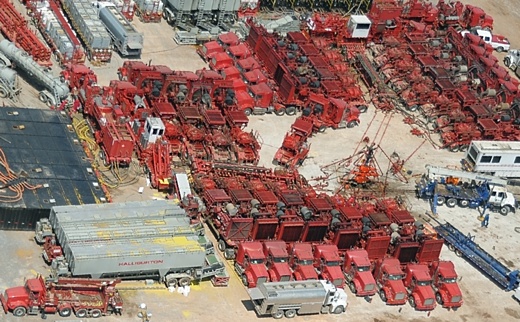SUBHEAD: Nearly arrested in Houston, no questions permitted, no return ticket necessary.
By Jim Karger on 28 June 2012 for The Dollar Vigilante -
(http://www.dollarvigilante.com/blog/2012/6/28/nearly-arrested-in-houston-no-questions-permitted-no-return.html)

Image above: Hindenburg on the tarmac. The Nazis provided a better time flying than today's American carriers. From (http://explow.com/the_hindenburg_%28film%29).
It all began last Sunday as a run-of-the-mill trip to give a couple of talks to an industry association in the States. I knew the travel would be grueling, but when I have the opportunity to talk about government incursions into liberty, I usually jump at the chance.
I flew United Airlines (formerly Continental) out of Leon, Mexico, near my home in San Miguel de Allende, and arrived in Houston without incident. It was when I boarded a United flight to San Francisco that things went south in a hurry.
I noticed there were several people on the flight with the same boarding pass numbers. One of those duplicate boarding passes turned out to be mine.
After taking my assigned seat 37F, a flight attendant (who we will call Linda, mostly because that was her name) walked over, looked at me distractedly, asked to see my boarding pass, and told me matter-of-factly, "You have to move to 21B." I wasn't keen on moving from my window seat to a middle seat and told her I was sitting in my assigned seat, and asked why I had to move, adding that the other guy with 37F not only came after me, but had arrived late.
Linda rolled her eyes and said she would check. I found it an inappropriate response. She returned a few minutes later with no answer to my question, but said firmly, "They say you have to move to 21B."
I told Linda that her response was "unhelpful," that I still didn't have a reason why I needed to move and that I didn't know who "they" were.
She disappeared again, clearly perturbed. When she returned, she wore a smile and said, "They want to help you with your seating assignment. Just go to the front and they will work it out for you."
I took the bait; my mistake. When I got to the front of the plane, several airline employees (not flight crew) were standing on the jetway. A 50-something blonde woman asked that I step out and talk to her. The second I stepped out of the plane she grabbed my boarding pass and said, "You are off the flight."
At this moment, I noticed another airline employee, a young male, shuttle a young kid by me onto the plane. I asked the obvious, "Why?"
"Because you are refusing to fly in 21B and you were late."
I replied, "Not right, lady. I was sitting in 37F, my assigned seat, when the guy who was late came with a 37F boarding pass, and I never refused to sit anywhere. I wanted to know why I was being forced to move. I have a speech to give in the morning and I must be there."
She snarled openly, "Well, that doesn't matter to me. You are being uncooperative. You are off the flight," the tensile haired Femi-Nazi repeated with finality.
A male airline employee then came up behind me and grabbed my arm. I jerked out of his grasp and told him, "Don't touch me, ever." I could see fear in his eyes and he instantly backed off.
We had a proverbial Mexican standoff, with me being the only one from Mexico.
By that time, my mind was racing. Should I wait and be arrested? No problem with that. It would be a good test of the system. But then I thought to myself, "You are working on a second passport (through TDVPassports) and they all require background checks. A recent trumped up charge of air piracy would not look good on your record." It would be a tough decision.
At that moment the senior flight attendant on the plane, Celeste, broke the mental tie. She had apparently watched the whole sordid affair from inside the plane, stepped to the door and said, "No, he was not late and I want him on the flight." She reached out of the doorway and literally pulled me back onto the plane.
Apparently, she had the authority because except for a scowl by the Femi-Nazi and her gang of uniformed-thugs, nothing more was said and they jerked the kid out of 21B and put me there. After we were airborne, Celeste announced on the intercom, "I apologize for the harsh treatment of some of our passengers by our boarding crew." I knew she was talking about me.

Image above: Interior photo of Hindenburg lounge area with free seatng. From (http://www.kingsacademy.com/mhodges/03_The-World-since-1900/05_Depression/05c_Shifting-Sense-of-Order-2.htm).
Then, not once, but twice, she came to my seat and told me how sorry she was and how embarrassed she was for what had happened. She actually reached down and took my hand the second time, very emotional. I told her how much I appreciated what she did but that she knew what happened wasn't right. She said nothing. What could she say? She probably took personal risk standing up for me.
As I sat there in 21B, exactly what had happened and why it happened became clear to me.
The tensile haired blonde holding court on the jetway had in her own mind, and perhaps in fact had, legal authority to take me off the plane, not for sitting in my seat but for not being a good sheep, one who lined up, sat down, did what he was told when he was told to do it, without question. And, I learned later, with a little research, she was one of those who had been given a little authority. This from the FAA website:
Did I "interfere" with Linda in the performance of her duties? Not really. I believe Linda's duty is to get me a drink when I want one. Regardless, I merely asked a question of Linda and they didn't want to answer. But I am convinced that Linda and her blonde buddy on the jetway could have made a case that by sending her away twice for the answer to my question that I was being "unruly," as in not able to be ruled, which in the most literal sense was true.
In a Police State, given time, everyone becomes the police. People begin to act out what they see and feel themselves. Physical authority becomes more important than property rights and since authority is all there is, it is often used indiscriminate and harsh. Transparency ceases to exist, and the audacity to question authority meets with immediate and severe repercussions.
On occasion, a human being whose ethics depend on principles rather than situations, will intercede, but many will stand by idly and watch, and most will participate in the abuse if only because it makes them feel important inside a collective in which they have no importance at all.
Such is the problem with statism. The state is the ultimate authority. The state uses its authority to punish those who reject the party line, or even question it, which causes others to cower. People are afraid of the state rather than the state being afraid of the people, the latter necessary to have any semblance of freedom. The state carefully parcels out bits of authority to those who comply, to those who are "good soldiers", a euphemism for anyone who will do anything regardless of what is right, regardless of whose person or property is being violated.
Mine was an admittedly small but acute example of this dynamic. The state expects travelers to line up as many times as is necessary, to ignore the value of their own time, and show up two hours early for no good or apparent reason, and then be herded into a corral before being told to put their hands over their heads and be stripped naked by a high-tech scanner. The State assumes that anyone who would tolerate such abuse would surely give up their seat when told to do so by someone with the critical imprimatur of the state.
Upon arrival in San Francisco, waiting for my plane to Spokane, I witnessed not one, but two other abuses of passengers, one who merely wanted to board a plane that was clearly sitting right in front of her, and the other an older woman who dared to drag her bag into an area "reserved for airline personnel". They were both castigated bitterly and loudly.
Epilog: No word from United. I wasn't expecting any. The good news is that this, along with a myriad of other recent events, has convinced me that the light isn't worth the candle as far as humping airplanes to speak to audiences (the same realization Jeff Berwick came to) who oftentimes leave shocked, shaking their heads, but who rarely actually do anything to better their own conditions. So, United Airlines, I won't be needing a return ticket to the USSA if only because I have no intention of returning except as necessary to visit family and friends who I will strongly encourage to instead visit me here in much freer Mexico.
• Jim Karger is a lawyer who has represented American businesses against incursions by government and labor unions for 30 years. He has been the subject of many feature articles, including, "Outlandish Labor Lawyer Gets No Objections From Staid Clients," published in the Wall Street Journal, and most recently was featured in an article entitled, "You Can Get There From Here," published by the American Bar Association. In 2001, he left Dallas, and moved to San Miguel de Allende in the high desert of central Mexico where he sought and found a freer and simpler life for he and his wife, Kelly, and their 10 dogs.
.
By Jim Karger on 28 June 2012 for The Dollar Vigilante -
(http://www.dollarvigilante.com/blog/2012/6/28/nearly-arrested-in-houston-no-questions-permitted-no-return.html)

Image above: Hindenburg on the tarmac. The Nazis provided a better time flying than today's American carriers. From (http://explow.com/the_hindenburg_%28film%29).
It all began last Sunday as a run-of-the-mill trip to give a couple of talks to an industry association in the States. I knew the travel would be grueling, but when I have the opportunity to talk about government incursions into liberty, I usually jump at the chance.
I flew United Airlines (formerly Continental) out of Leon, Mexico, near my home in San Miguel de Allende, and arrived in Houston without incident. It was when I boarded a United flight to San Francisco that things went south in a hurry.
I noticed there were several people on the flight with the same boarding pass numbers. One of those duplicate boarding passes turned out to be mine.
After taking my assigned seat 37F, a flight attendant (who we will call Linda, mostly because that was her name) walked over, looked at me distractedly, asked to see my boarding pass, and told me matter-of-factly, "You have to move to 21B." I wasn't keen on moving from my window seat to a middle seat and told her I was sitting in my assigned seat, and asked why I had to move, adding that the other guy with 37F not only came after me, but had arrived late.
Linda rolled her eyes and said she would check. I found it an inappropriate response. She returned a few minutes later with no answer to my question, but said firmly, "They say you have to move to 21B."
I told Linda that her response was "unhelpful," that I still didn't have a reason why I needed to move and that I didn't know who "they" were.
She disappeared again, clearly perturbed. When she returned, she wore a smile and said, "They want to help you with your seating assignment. Just go to the front and they will work it out for you."
I took the bait; my mistake. When I got to the front of the plane, several airline employees (not flight crew) were standing on the jetway. A 50-something blonde woman asked that I step out and talk to her. The second I stepped out of the plane she grabbed my boarding pass and said, "You are off the flight."
At this moment, I noticed another airline employee, a young male, shuttle a young kid by me onto the plane. I asked the obvious, "Why?"
"Because you are refusing to fly in 21B and you were late."
I replied, "Not right, lady. I was sitting in 37F, my assigned seat, when the guy who was late came with a 37F boarding pass, and I never refused to sit anywhere. I wanted to know why I was being forced to move. I have a speech to give in the morning and I must be there."
She snarled openly, "Well, that doesn't matter to me. You are being uncooperative. You are off the flight," the tensile haired Femi-Nazi repeated with finality.
A male airline employee then came up behind me and grabbed my arm. I jerked out of his grasp and told him, "Don't touch me, ever." I could see fear in his eyes and he instantly backed off.
We had a proverbial Mexican standoff, with me being the only one from Mexico.
By that time, my mind was racing. Should I wait and be arrested? No problem with that. It would be a good test of the system. But then I thought to myself, "You are working on a second passport (through TDVPassports) and they all require background checks. A recent trumped up charge of air piracy would not look good on your record." It would be a tough decision.
At that moment the senior flight attendant on the plane, Celeste, broke the mental tie. She had apparently watched the whole sordid affair from inside the plane, stepped to the door and said, "No, he was not late and I want him on the flight." She reached out of the doorway and literally pulled me back onto the plane.
Apparently, she had the authority because except for a scowl by the Femi-Nazi and her gang of uniformed-thugs, nothing more was said and they jerked the kid out of 21B and put me there. After we were airborne, Celeste announced on the intercom, "I apologize for the harsh treatment of some of our passengers by our boarding crew." I knew she was talking about me.

Image above: Interior photo of Hindenburg lounge area with free seatng. From (http://www.kingsacademy.com/mhodges/03_The-World-since-1900/05_Depression/05c_Shifting-Sense-of-Order-2.htm).
Then, not once, but twice, she came to my seat and told me how sorry she was and how embarrassed she was for what had happened. She actually reached down and took my hand the second time, very emotional. I told her how much I appreciated what she did but that she knew what happened wasn't right. She said nothing. What could she say? She probably took personal risk standing up for me.
As I sat there in 21B, exactly what had happened and why it happened became clear to me.
The tensile haired blonde holding court on the jetway had in her own mind, and perhaps in fact had, legal authority to take me off the plane, not for sitting in my seat but for not being a good sheep, one who lined up, sat down, did what he was told when he was told to do it, without question. And, I learned later, with a little research, she was one of those who had been given a little authority. This from the FAA website:
Passengers & Cargo
Unruly Passengers
FAA Enforcement Actions
Violations of 14 CFR 91.11, 121.580, 135.120 & 49 U.S.C. 46318
"Unruly Passengers"
Interfering with the duties of a crew member violates federal law.
Federal Aviation Regulations 91.11, 121.580 and 135.120 state that "no person may assault, threaten, intimidate, or interfere with a crew member in the performance of the crew-member's duties aboard an aircraft being operated."
The FAA's database contains only those incidents reported to FAA. Reporting is at the discretion of the crew member.
Security violations are excluded. Those cases are handled by the Transportation Security Administration (TSA).
Updated numbers are posted on this web page quarterly.
The repercussions for passengers who engage in unruly behavior can be substantial. They can be fined by FAA or prosecuted on criminal charges.
As part of the FAA's Reauthorization Bill (April 16, 2000) FAA can propose up to $25,000 per violation for unruly passenger cases. Previously, the maximum civil penalty per violation was $1,100. One incident can result in multiple
Did I "interfere" with Linda in the performance of her duties? Not really. I believe Linda's duty is to get me a drink when I want one. Regardless, I merely asked a question of Linda and they didn't want to answer. But I am convinced that Linda and her blonde buddy on the jetway could have made a case that by sending her away twice for the answer to my question that I was being "unruly," as in not able to be ruled, which in the most literal sense was true.
In a Police State, given time, everyone becomes the police. People begin to act out what they see and feel themselves. Physical authority becomes more important than property rights and since authority is all there is, it is often used indiscriminate and harsh. Transparency ceases to exist, and the audacity to question authority meets with immediate and severe repercussions.
On occasion, a human being whose ethics depend on principles rather than situations, will intercede, but many will stand by idly and watch, and most will participate in the abuse if only because it makes them feel important inside a collective in which they have no importance at all.
Such is the problem with statism. The state is the ultimate authority. The state uses its authority to punish those who reject the party line, or even question it, which causes others to cower. People are afraid of the state rather than the state being afraid of the people, the latter necessary to have any semblance of freedom. The state carefully parcels out bits of authority to those who comply, to those who are "good soldiers", a euphemism for anyone who will do anything regardless of what is right, regardless of whose person or property is being violated.
Mine was an admittedly small but acute example of this dynamic. The state expects travelers to line up as many times as is necessary, to ignore the value of their own time, and show up two hours early for no good or apparent reason, and then be herded into a corral before being told to put their hands over their heads and be stripped naked by a high-tech scanner. The State assumes that anyone who would tolerate such abuse would surely give up their seat when told to do so by someone with the critical imprimatur of the state.
Upon arrival in San Francisco, waiting for my plane to Spokane, I witnessed not one, but two other abuses of passengers, one who merely wanted to board a plane that was clearly sitting right in front of her, and the other an older woman who dared to drag her bag into an area "reserved for airline personnel". They were both castigated bitterly and loudly.
Epilog: No word from United. I wasn't expecting any. The good news is that this, along with a myriad of other recent events, has convinced me that the light isn't worth the candle as far as humping airplanes to speak to audiences (the same realization Jeff Berwick came to) who oftentimes leave shocked, shaking their heads, but who rarely actually do anything to better their own conditions. So, United Airlines, I won't be needing a return ticket to the USSA if only because I have no intention of returning except as necessary to visit family and friends who I will strongly encourage to instead visit me here in much freer Mexico.
• Jim Karger is a lawyer who has represented American businesses against incursions by government and labor unions for 30 years. He has been the subject of many feature articles, including, "Outlandish Labor Lawyer Gets No Objections From Staid Clients," published in the Wall Street Journal, and most recently was featured in an article entitled, "You Can Get There From Here," published by the American Bar Association. In 2001, he left Dallas, and moved to San Miguel de Allende in the high desert of central Mexico where he sought and found a freer and simpler life for he and his wife, Kelly, and their 10 dogs.
.











